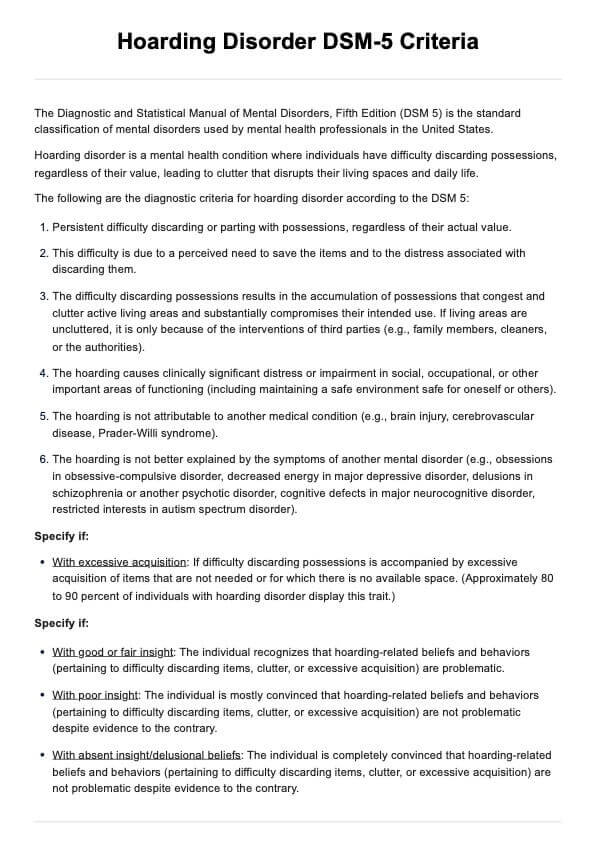Hoarding disorder is often linked with conditions like obsessive-compulsive disorder (OCD) and anxiety.

Hoarding Disorder DSM-5 Criteria
Get this Hoarding Disorder DSM-5 Criteria for free to diagnose people with hoarding disorder.
Use Template
Hoarding Disorder DSM-5 Criteria Template
Commonly asked questions
Hoarding disorder is diagnosed by a mental health professional who looks at how hard it is for someone to throw things away and how cluttered their living space is.
Animal hoarding means keeping too many animals in poor conditions without giving them proper care or understanding how it hurts their health.
EHR and practice management software
Get started for free
*No credit card required
Free
$0/usd
Unlimited clients
Telehealth
1GB of storage
Client portal text
Automated billing and online payments











